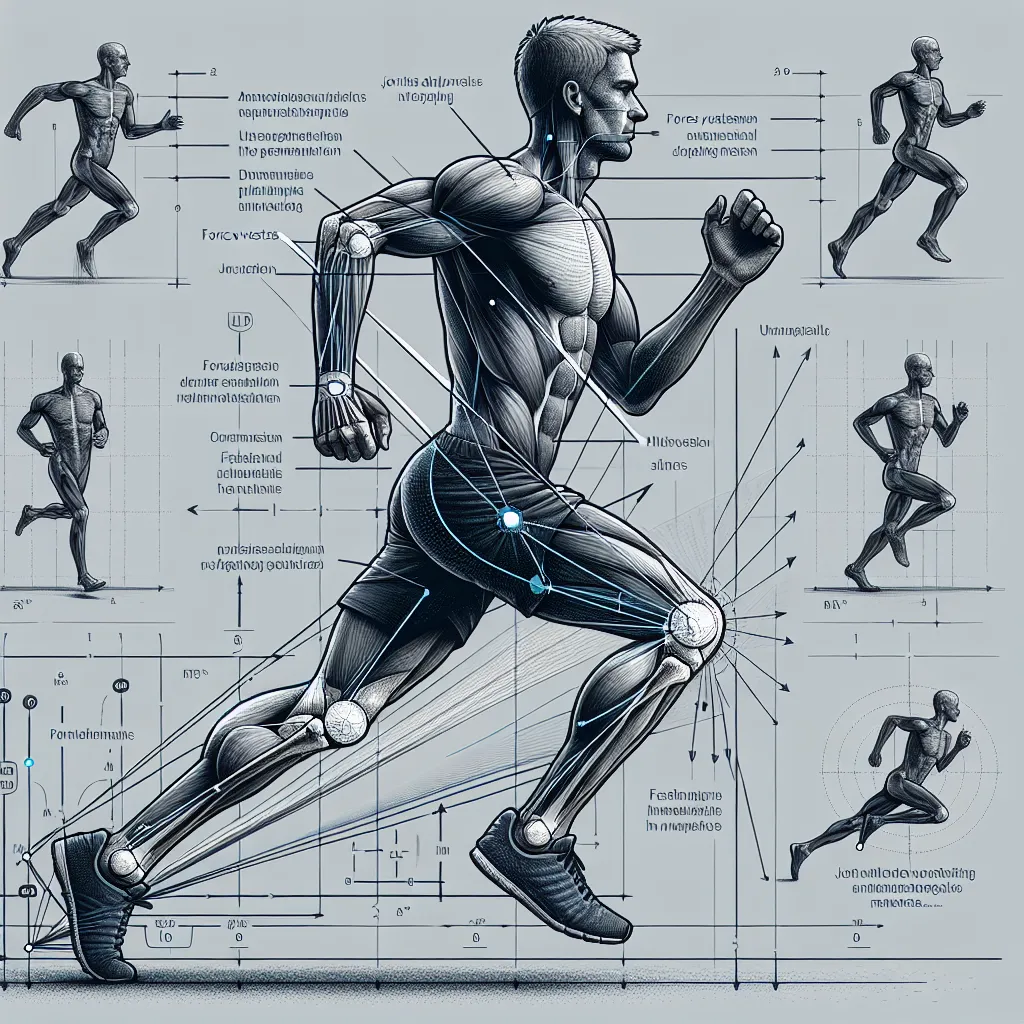Biomechanics in sports is a fascinating field that combines physics, engineering, and biology to analyze and improve athletic performance. For IELTS test-takers, understanding and using this specialized vocabulary can be a game-changer in the exam. Let’s dive into the world of biomechanics and explore how to effectively learn and apply this terminology in your IELTS preparation.
Understanding the Term “Biomechanics in Sports”
Biomechanics in sports (noun phrase)
/ˌbaɪəʊmɪˈkænɪks ɪn spɔːts/
Definition: The study of the mechanical laws relating to the movement or structure of living organisms applied to sports and exercise.
Context and Usage
-
Scientists use biomechanics in sports to analyze an athlete’s technique and improve performance.
In this sentence, “biomechanics in sports” is used as the subject, highlighting its role as a scientific approach to athletic analysis. -
The coach employed principles of biomechanics in sports to refine the swimmer’s stroke efficiency.
Here, the phrase is used to describe a specific application in coaching, emphasizing its practical use in technique improvement. -
Understanding biomechanics in sports can help prevent injuries and enhance athletic longevity.
This example showcases the broader implications of biomechanics, linking it to injury prevention and career sustainability. -
The latest research in biomechanics in sports has revolutionized the way we approach training for high-jump athletes.
This sentence demonstrates how the field continually evolves and impacts training methodologies. -
Students pursuing a degree in sports science often study biomechanics in sports as a core subject.
This example illustrates the academic relevance of the topic, indicating its importance in sports education.
In IELTS, you’re likely to encounter this term in Reading passages related to sports science or in Writing Task 2 essays discussing technological advancements in athletics. It’s less common in the Listening test but could appear in academic lectures on sports or health sciences.

Vocabulary Analysis
Word Structure
- Bio- (prefix): relating to life or living organisms
- Mechanics (root): the branch of physics dealing with motion and forces
- In (preposition)
- Sports (noun)
Synonyms and Related Terms
- Sports biomechanics
- Kinesiology in athletics
- Movement analysis in sports
- Athletic biomechanics
- Sports motion studies
Antonyms and Contrasting Concepts
- Static sports analysis
- Intuitive coaching methods
- Traditional sports training
Memorization Techniques
Mind Mapping
Create a mind map with “Biomechanics in Sports” at the center, branching out to related concepts such as:
- Force analysis
- Motion capture
- Injury prevention
- Performance optimization
- Equipment design
Storytelling Technique
Imagine a sprinter named Alex who wants to break the 100-meter world record. Alex visits a sports lab where scientists use biomechanics to analyze every aspect of their running technique. They use high-speed cameras to capture Alex’s motion, force plates to measure ground reaction forces, and computer models to simulate different running strategies. Through this biomechanical analysis, Alex discovers the perfect stride length and arm movement to shave crucial milliseconds off their time.
Practical Application in IELTS
Writing Task 2 Example
Question: Some people believe that technology in sports has led to improved performance, while others argue it has taken away the human element of competition. Discuss both views and give your opinion.
In your response, you could write:
“One area where technology has significantly impacted sports is biomechanics. Biomechanics in sports allows athletes and coaches to analyze movement patterns with unprecedented precision. For instance, swimmers can optimize their stroke efficiency based on biomechanical analysis, leading to faster times. However, critics argue that this level of technological intervention diminishes the raw talent and instinct that traditionally defined athletic greatness.”
Speaking Part 3 Example
Question: How do you think technology will change sports in the future?
A strong response might include:
“I believe technology will continue to revolutionize sports through advancements in fields like biomechanics. Biomechanics in sports is already helping athletes understand their bodies better and perform more efficiently. In the future, we might see real-time biomechanical feedback during competitions, allowing athletes to make instant adjustments. This could lead to extraordinary performances but might also raise questions about fairness and the true spirit of sport.”
Exercises to Reinforce Learning
-
Gap-fill exercise:
Complete the sentence: “The study of __ in sports helps athletes optimize their __ and reduce the risk of __.”
(Answers: biomechanics, performance, injuries) -
Paraphrasing practice:
Rewrite the following sentence using the term “biomechanics in sports”:
“Scientists analyzed the runner’s movement to improve their technique.” -
Essay outline:
Create a brief outline for an essay discussing the impact of biomechanics on modern sports training.
Conclusion
Mastering the terminology of biomechanics in sports can significantly enhance your IELTS performance, particularly in tasks related to sports science, technology, and health. By understanding its application and practicing its usage in various contexts, you’ll be well-equipped to tackle questions on this topic in all sections of the IELTS exam.
Remember, the key to retention is regular practice. Try to incorporate this term into your English usage regularly, perhaps by discussing sports news or scientific articles that mention biomechanical analysis. Don’t hesitate to share your experiences or ask questions about using this vocabulary in the comments section below. Keep practicing, and you’ll see improvement in no time!
For more information on related topics, check out our articles on sports science and sports physiotherapy.